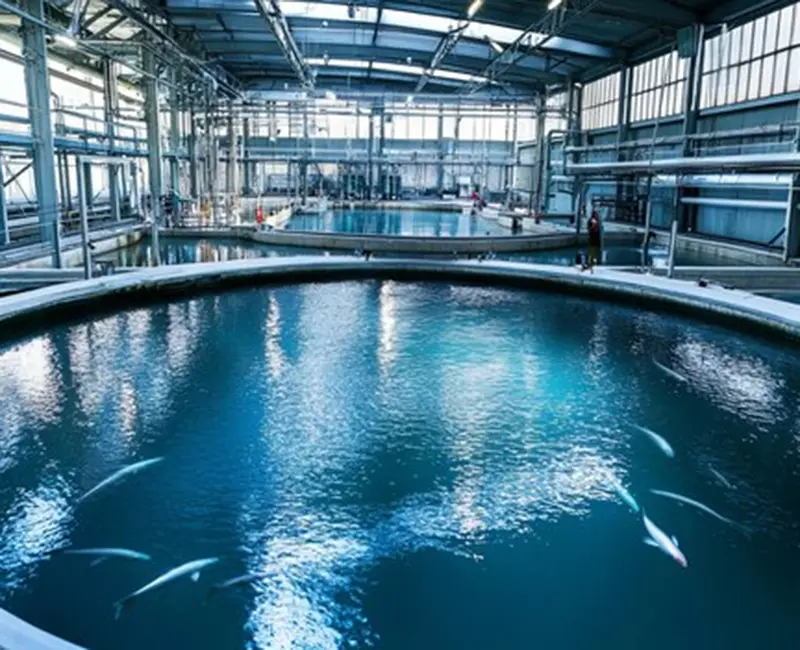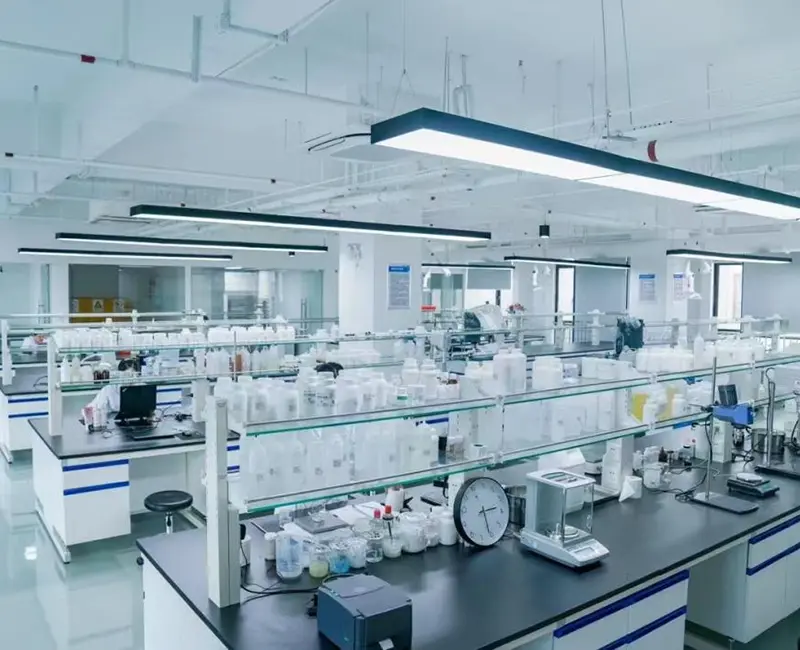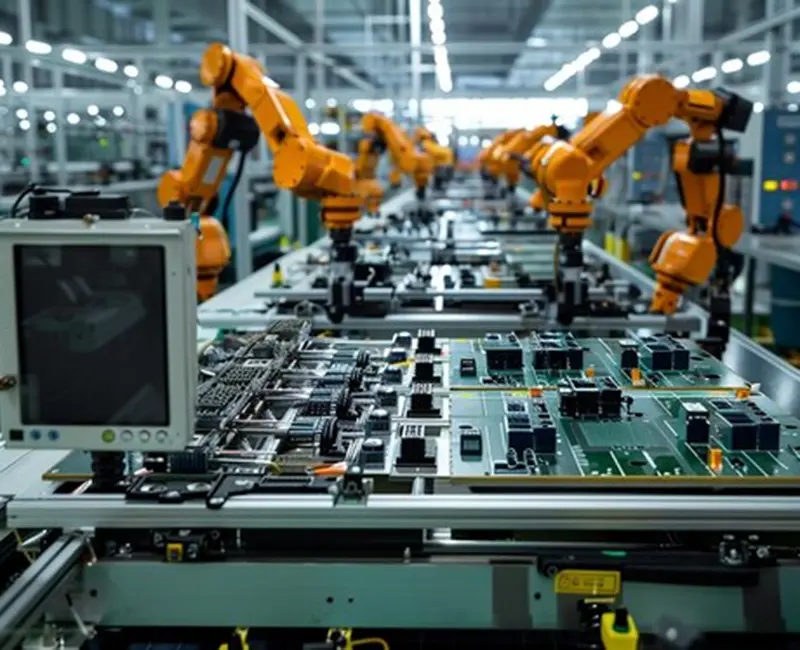Top 5 Cost-Effective Refrigeration Accessories for Budget Optimization

Refrigeration systems play a crucial role in both residential and commercial settings. Optimizing their efficiency can significantly reduce energy consumption and operational costs. Small investments in the right accessories often yield substantial savings. For instance:
- Refrigerators insulated with nitrile rubber consume only 0.09 kW/hr, compared to 0.11 kW/hr for glass wool and PUF.
- Smart temperature control systems can cut HVAC energy costs by 15-30%, saving facilities up to $60,000 annually.
Accessories like smart temperature controllers, energy-efficient LED lights, and Copper Fin Heat Exchangers not only enhance performance but also ensure long-term savings. These tools are essential for anyone aiming to optimize their refrigeration budget.
Key Takeaways
- Using smart temperature controllers can save 15-30% on energy. This helps businesses save a lot of money.
- Changing to LED lights uses less electricity and saves money. It also makes it easier to see inside refrigerators.
- Keeping door seals tight stops cold air from leaking out. This saves energy and helps appliances last longer.
- Copper fin heat exchangers move heat better, cutting costs and improving cooling.
- Cleaning condenser coils often keeps them working well. Even a little dirt can use more energy.
Smart Temperature Controllers

Features of Smart Temperature Controllers
Smart temperature controllers are designed to optimize refrigeration systems by maintaining precise temperature levels. These devices use advanced sensors, transmitters, and cooling mechanisms to monitor and adjust conditions effectively. They also integrate IoT and automation technologies, enabling remote control and real-time monitoring. Industries like HVAC, pharmaceuticals, and food processing rely heavily on these controllers for their reliability and performance.
Key features include:
- Energy efficiency: Reduces unnecessary energy consumption by adjusting cooling or heating elements based on real-time data.
- Remote control capabilities: Allows users to manage settings from anywhere, improving convenience and operational flexibility.
- Enhanced operational efficiency: Prevents quality issues by maintaining consistent temperatures.
Benefits for Energy Efficiency and Cost Savings
Smart temperature controllers significantly reduce energy use and operational costs. Studies show that these systems can lower energy consumption by 10-30% when paired with occupancy sensors. For example, the Department of Energy found that larger facilities experienced a 15-20% reduction in HVAC-related costs after implementing smart energy management systems.
| Source | Energy Efficiency (%) | Cost Savings (%) |
|---|---|---|
| Lawrence Berkeley National Laboratory | 10-30% | Direct utility cost savings |
| Department of Energy | 15-20% | Reductions on HVAC costs |
These savings translate into substantial financial benefits, especially for commercial operations. For instance, the Texas Facilities Commission reported a 25% reduction in HVAC electricity usage across 9.5 million square feet, saving hundreds of thousands annually.
Practical Applications in Refrigeration Systems
Smart temperature controllers are versatile and can be applied in various refrigeration systems. They are ideal for refrigerators, freezers, and medical ultra-low temperature units. In commercial settings, they enhance energy efficiency in display cabinets, wine coolers, and ice makers. By maintaining optimal temperatures, these controllers prevent spoilage and ensure product quality.
At senjun, we understand the importance of precision in refrigeration. Our copper aluminum fin heat exchangers complement smart temperature controllers, offering unmatched efficiency and reliability. Together, these tools help businesses achieve long-term savings and operational excellence.
Energy-Efficient LED Lights
Advantages of LED Lighting in Refrigeration
LED lighting offers numerous advantages for refrigeration systems. These lights consume significantly less energy than traditional incandescent or fluorescent bulbs. This efficiency not only reduces electricity bills but also lowers the carbon footprint, making it an environmentally friendly choice. Additionally, LEDs emit minimal heat, which helps maintain consistent internal temperatures in refrigerators. This feature is particularly beneficial for preserving food quality and reducing spoilage.
Other key benefits include:
- Enhanced visibility due to bright, white light, which makes locating items easier.
- Longevity and durability, as LEDs last much longer than traditional bulbs, reducing replacement frequency.
- Compact design, allowing for creative configurations and aesthetic improvements in refrigeration units.
| Advantage | Description |
|---|---|
| Energy Efficiency | LED lights consume significantly less energy than traditional bulbs, leading to lower energy bills. |
| Improved Visibility | Bright, white light enhances visibility, helping users locate items quickly and reducing food waste. |
| Temperature Management | Minimal heat output helps maintain consistent internal temperatures, preventing spoilage. |
| Design Flexibility | Compact size allows for creative configurations and aesthetic enhancements in fridge design. |
| Longevity and Durability | LEDs last much longer than incandescent bulbs, reducing replacement frequency and waste. |
| Eco-Friendly Option | Lower energy consumption and recyclable materials contribute to sustainability efforts. |
Cost Savings Compared to Traditional Lighting
Switching to LED lighting can lead to substantial cost savings over time. Traditional bulbs consume more energy and generate heat, which increases the workload on refrigeration systems. LEDs, on the other hand, use less electricity and produce minimal heat, reducing overall energy consumption. For appliances where lights remain on for extended periods, such as display cabinets or commercial refrigerators, the savings become even more significant.
By transitioning to LEDs, businesses and homeowners can enjoy lower utility bills and reduced maintenance costs. The long lifespan of LEDs means fewer replacements, which further contributes to cost efficiency. Over time, these savings can offset the initial investment in LED lighting, making it a smart choice for budget-conscious individuals and organizations.
Use Cases in Commercial and Residential Settings
LED lighting has proven to be highly effective in both commercial and residential refrigeration systems. In commercial settings, LEDs have revolutionized the lighting landscape by emitting minimal heat, which reduces the burden on cooling systems. This efficiency translates into lower energy bills, making LEDs a practical and cost-effective solution for businesses.
In residential refrigerators, LEDs provide improved visibility, allowing users to locate items quickly and reduce food waste. Their energy efficiency supports better temperature management, ensuring that food stays fresh for longer. Bright, white LED light resembles natural daylight, enhancing the overall user experience.
Key applications include:
- Display cabinets in retail stores, where LEDs enhance product visibility while minimizing energy use.
- Wine coolers and medical refrigerators, where precise temperature control is critical.
- Home refrigerators, where LEDs improve visibility and reduce energy consumption.
At senjun, we prioritize energy efficiency and sustainability. Our copper aluminum fin heat exchangers complement LED lighting by optimizing refrigeration performance, ensuring long-term savings and reliability for our customers.
Door Seals and Gaskets

Importance of Proper Sealing for Energy Efficiency
Door seals and gaskets play a critical role in maintaining the energy efficiency of refrigeration systems. A well-sealed door prevents cold air from escaping and keeps warm air out, ensuring the internal temperature remains stable. When seals are damaged or worn out, refrigerators must work harder to compensate for the temperature fluctuations. This increased workload leads to higher energy consumption and operational costs.
To maximize efficiency:
- Ensure that door gaskets remain intact and free from damage.
- Regularly check seals to confirm they close tightly and form a proper barrier.
- Replace failing seals promptly to prevent unnecessary energy loss.
Studies show that the condition of refrigerator door seals directly impacts energy efficiency. A failing seal forces the appliance to consume more energy, increasing operational costs. Properly sealed ductwork and doors allow conditioned air to flow efficiently, reducing the workload on HVAC systems and lowering energy consumption.
Features of High-Quality Door Seals
High-quality door seals are designed to provide a tight and durable barrier. They are typically made from flexible, long-lasting materials like rubber or silicone, which can withstand repeated use without losing their effectiveness. These seals are resistant to wear and tear, ensuring they maintain their integrity over time.
Key features include:
- Flexibility: Allows the seal to conform to the door frame for a snug fit.
- Durability: Withstands temperature fluctuations and frequent opening and closing.
- Ease of Maintenance: High-quality seals are easy to clean and inspect for damage.
Investing in premium seals ensures that refrigeration systems operate efficiently, reducing the risk of energy loss and maintaining consistent performance.
How They Reduce Energy Costs
Properly functioning door seals significantly reduce energy costs by minimizing the strain on refrigeration systems. When seals close tightly, they prevent cold air from escaping, which reduces the need for the compressor to work overtime. This efficiency translates into lower electricity bills and extends the lifespan of the appliance.
Regular maintenance is essential for maximizing these benefits. Testing and replacing damaged seals ensures that refrigerators operate at peak efficiency. By maintaining proper sealing, businesses and homeowners can save on energy costs while reducing their environmental impact.
At senjun, we understand the importance of energy efficiency in refrigeration. Our copper aluminum fin heat exchangers complement high-quality door seals, providing reliable performance and long-term savings for our customers.
Copper Fin Heat Exchanger
What Is a Copper Fin Heat Exchanger?
A copper fin heat exchanger is a highly efficient component used in refrigeration systems to transfer heat effectively. It consists of copper tubes paired with fins made from materials like aluminum or copper. These fins increase the surface area for heat exchange, ensuring optimal thermal performance. The design varies based on application needs, with options like flat fins, smooth sine wave fins, and window fins.
To illustrate, here are some examples of copper fin heat exchangers and their specifications:
| Item Code | Product Name | Materials | Tube O.D. | Fin Type | Fin Space |
|---|---|---|---|---|---|
| SJ068 | Condenser | Copper tube aluminum fin, Stainless steel sheet | 9.52mm | Smooth sine wave fin | 2.5mm |
| SJ030 | Condenser | Copper tube aluminum fin, galvanized plate | 7mm, 9.52mm | Flat fin, Smooth sine wave fin | 1.2—3.5mm |
| SJ029 | Condenser | Copper tube Copper fin, Stainless steel plate | 9.52mm | Flat fin | 2mm |
These specifications highlight the versatility of copper fin heat exchangers in meeting diverse refrigeration requirements.
Benefits of Using Copper Fin Heat Exchangers
Copper fin heat exchangers offer several advantages that make them indispensable in refrigeration systems. First, copper's excellent thermal conductivity ensures rapid and efficient heat transfer. This reduces energy consumption and enhances system performance. Second, the durability of copper and aluminum materials ensures a long lifespan, even in demanding environments.
Another key benefit is their adaptability. Copper fin heat exchangers can be customized with different fin types and spacing to suit specific applications. For instance, smooth sine wave fins provide superior airflow, while flat fins are ideal for compact designs. These features make them a cost-effective choice for both residential and commercial refrigeration systems.
Applications in Refrigeration Systems
Copper fin heat exchangers are widely used across various refrigeration applications. In commercial settings, they are integral to display cabinets, ice makers, and medical refrigerators. Their ability to maintain precise temperatures ensures product quality and safety. For example, air-cooled heat exchangers with copper tube aluminum fins are commonly used in retail refrigeration due to their efficiency and reliability.
Here are some practical examples of their applications:
| Product Name | Materials | Tube O.D. | Fin Type | Fin Space | Pitch of Holes and Rows |
|---|---|---|---|---|---|
| Air-Cooled Heat Exchanger | Copper tube aluminum fin, galvanized plate | 7mm, 9.52mm | Flat fin, Window fin, louver fin, Smooth sine wave fin | 1.3—3mm | 19.0512.7mm, 25.522mm, 25*21.65mm |
| Special Military Heat Exchanger | Copper tube Copper fin, Stainless steel plate | 9.52mm | Flat fin | 2mm | 25*21.65mm |
At senjun, we specialize in manufacturing high-quality copper fin heat exchangers tailored to meet the needs of modern refrigeration systems. Our products combine efficiency, durability, and adaptability, ensuring optimal performance for our clients.
Condenser Coil Cleaning Brushes
The Role of Clean Condenser Coils in Efficiency
Clean condenser coils are essential for maintaining the efficiency of refrigeration systems. Over time, dirt, dust, and grease accumulate on the coils, disrupting the heat transfer process. This buildup forces the system to work harder, reducing its cooling capabilities and increasing energy consumption. Experts recommend cleaning condenser coils at least every three months, especially in environments prone to higher levels of dust or grease. Even a thin layer of dirt, as little as 1/100th of an inch, can reduce system efficiency by 5%. This decline not only impacts cooling performance but also leads to higher utility costs.
Routine maintenance ensures optimal HVAC performance by preventing overheating and maintaining consistent energy efficiency. Neglecting this simple task can result in significant energy losses and increased operational expenses. By keeping condenser coils clean, you can enhance the overall performance of your refrigeration system while reducing energy consumption.
Features of Effective Cleaning Brushes
Effective condenser coil cleaning brushes are designed to simplify maintenance and ensure thorough cleaning. These brushes typically feature durable bristles that can remove stubborn dirt and debris without damaging the coils. Their ergonomic handles provide a comfortable grip, making it easier to clean hard-to-reach areas. Some brushes also come with flexible or angled designs, allowing users to navigate tight spaces effortlessly.
Key features to look for include:
- Durable bristles: Strong enough to remove grime without harming the coils.
- Ergonomic design: Comfortable handles for ease of use during extended cleaning sessions.
- Flexibility: Angled or adjustable designs for accessing confined spaces.
Investing in a high-quality cleaning brush ensures that your maintenance routine is both efficient and effective, prolonging the lifespan of your refrigeration system.
Cost Savings from Regular Maintenance
Regularly cleaning condenser coils with the right tools can lead to substantial cost savings. Dirty coils increase energy consumption, as the system must work harder to achieve the desired cooling effect. Studies show that a 5% drop in efficiency, caused by just 1/100th of an inch of dirt, can significantly raise utility bills. In extreme cases, dirt accumulation of 0.042 inches can reduce efficiency by 21% and increase energy use by 35%.
The financial impact of neglecting coil maintenance extends beyond higher energy bills. Dirty coils can cause system components to wear out faster, leading to costly repairs or replacements. By incorporating routine cleaning into your maintenance schedule, you can avoid these expenses and ensure your refrigeration system operates at peak efficiency. This simple practice not only saves money but also supports sustainable energy use.
At senjun, we understand the importance of maintaining efficient refrigeration systems. Our copper aluminum fin heat exchangers work seamlessly with clean condenser coils, delivering reliable performance and long-term savings for our customers.
Optimizing refrigeration systems doesn’t have to be expensive. The five accessories we discussed—smart temperature controllers, energy-efficient LED lights, door seals, copper fin heat exchangers, and condenser coil cleaning brushes—offer practical solutions for reducing energy consumption and operational costs. Each tool plays a unique role in improving efficiency and ensuring long-term savings.
For example, materials like expanded polystyrene and nitrile rubber demonstrate significant energy efficiency improvements, as shown below:
| Material | Thermal Conductivity (W/m.K) | Energy Efficiency Improvement | Cost Savings Potential |
|---|---|---|---|
| Expanded Polystyrene | 0.03 | High | Significant |
| Nitrile Rubber | N/A | Moderate | Moderate |
I encourage you to explore these options to enhance your refrigeration systems. At senjun, we specialize in high-quality components, including copper fin heat exchangers, designed to deliver exceptional performance and reliability. Let’s work together to achieve better budget optimization and energy efficiency.
FAQ
What are the most important factors to consider when choosing refrigeration accessories?
When selecting refrigeration accessories, I focus on energy efficiency, durability, and compatibility with the system. Accessories like copper fin heat exchangers and LED lights should enhance performance while reducing costs. Always prioritize quality to ensure long-term savings and reliability.
How often should I replace door seals and gaskets?
I recommend inspecting door seals every six months. Replace them immediately if you notice cracks, wear, or poor sealing. Regular maintenance ensures energy efficiency and prevents unnecessary strain on the refrigeration system.
Can smart temperature controllers work with older refrigeration systems?
Yes, most smart temperature controllers are compatible with older systems. I suggest checking the specifications to ensure proper integration. These controllers can modernize older units, improving energy efficiency and reducing operational costs.
Why is regular condenser coil cleaning important?
Dirty condenser coils reduce heat transfer efficiency, forcing the system to consume more energy. I clean coils every three months to maintain optimal performance. This simple practice lowers energy bills and extends the lifespan of the refrigeration unit.
Are copper fin heat exchangers worth the investment?
Absolutely. Copper fin heat exchangers offer excellent thermal conductivity and durability. They improve energy efficiency and reduce operational costs. At senjun, we design high-quality heat exchangers tailored to meet diverse refrigeration needs, ensuring long-term value for your investment.


















